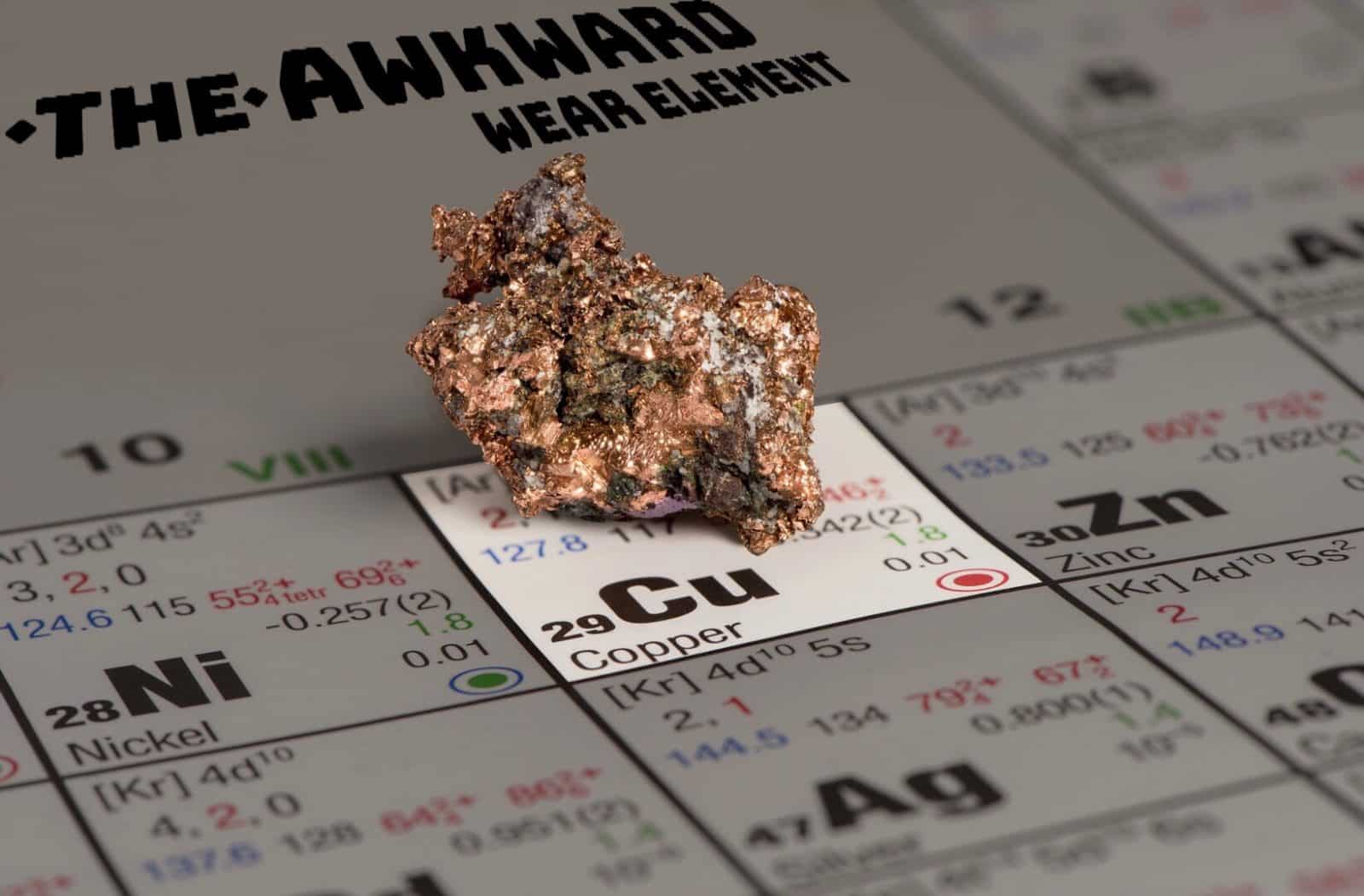Copper is one of the most interesting wear elements in my opinion as it requires more skill to interpret it’s significance. Values in the thousands of ppm can be totally normal, yet a value of 50ppm can be a sign of serious component wear in the same machine.
This is not normally seen to the same extent with other wear metals, so what makes copper so special?
Engine Leaching
When an oil is added to an engine, it usually contains an anti-wear additive. The most common of these is ZDDP or Zinc dialkyldithiophosphate. This contains Zinc, phosphorus and importantly sulphur.
The purpose of these additives is during the early running in, where exposed metal occurs after wearing in to smooth surface imperfections. The sulphur reacts with these metals to form metal sulphides. This forms a tough coating to prevent against further wear termed boundary lubrication. This is because metal sulphides are generally harder than the base metal. For example iron is ~4 to 5 on the Mohs hardness scale, yet iron sulphide can be ~6.5. This is not true of copper though in which copper is ~3 and copper sulphides are between 1 and 2. This is further compounded by the fact copper sulphides are easily dispersible in the oil and so the layer washes off into the oil upon agitation. This process repeats time and time again until very high levels of copper up to 2000ppm are in the oil and is perfectly normal.
Eventually the layer stabilises unless additives are changed such as with a change in lube supplier and within a few oil changes this copper level decreases. This is a perfectly normal process and is more noticeable in engines with high percentage of copper components and/or copper coolers.
Bearing wear.
Within standard trunk engines the crankshaft journal bearings are often made of copper, lead and tin alloys or indivdual layers. This can mean that low levels of copper at e.g. 40ppm can be significant in determining bearing wear, but a value of 800 in the same engine is not. Hence this requires experience to determine whether the copper is wear or leaching. This is why it is usually difficult for automatic diagnostic systems used by many laboratories to accurately determine which is which and often the diagnostic commenting used is rather vague to account for this with these systems. In a previous role as a diagnostics manager I did make some groundwork in programming diagnostic algorithms to accurately highlighting the copper as wear or leaching based on combinations of other metals present. However the only true way to tell is to know the wear particle sizes involved which often is very costly to determine. A new technique called LubeWear offered exclusively at OAL is likely to change all that and make accurate determination of copper as abnormal wear particles vs leaching far simpler. What’s more it is offered as standard on all samples, so this difficulty may be a thing of the past in years to come.
You can see a video explaining the Technology below.
From Cage wear to Phosphor bronze
Another example of changes in condemning limits is bearing cages which are often made of copper and small increases can be an early indicator of misalignment causing cutting wear. However, high values can also be normal with antiwear additive interactions causing leaching. The attack of the cage by additives in this case is usually not significant as these are not load bearing, but the cutting wear means the bearing element is cutting the cage metal and a catastrophic failure will eventually occur.
One other example to consider too is gearboxes, in which often the application or type of gearbox being used may not be exactly explained to the lab on the sample request, making it sometimes difficult to know the exact makeup of the system submitted for analysis, hence experience is often what kicks in to fill in the missing pieces. An example of the contrast is E.g. 200ppm copper may be serious in one gearbox, but in another, a value of 600 with visible metal debris is perfectly normal for others such as certain worm gear systems. Hence the importance of regularly talking to your laboratory about the machinery and lubricants in use to ensure the best diagnosis possible can be formed. Oil sump volume is also something to make sure you provide to the lab as 50ppm in a lube volume of 5L is far less significant than 50ppm in a 500L system as the larger the oil volume the more diluted the wear particles will become.
Copper is one of about 30 tests on the average oil analysis report, but it can often be one of the most tricky elements to set diagnostic limits for. Hence why not speak to your lab to discuss what limits are best for your machinery today. If they are a good lab they will be happy to assist you on this, but you can also contact me for advice on the chat icon at the bottom right of this page too if in doubt.


